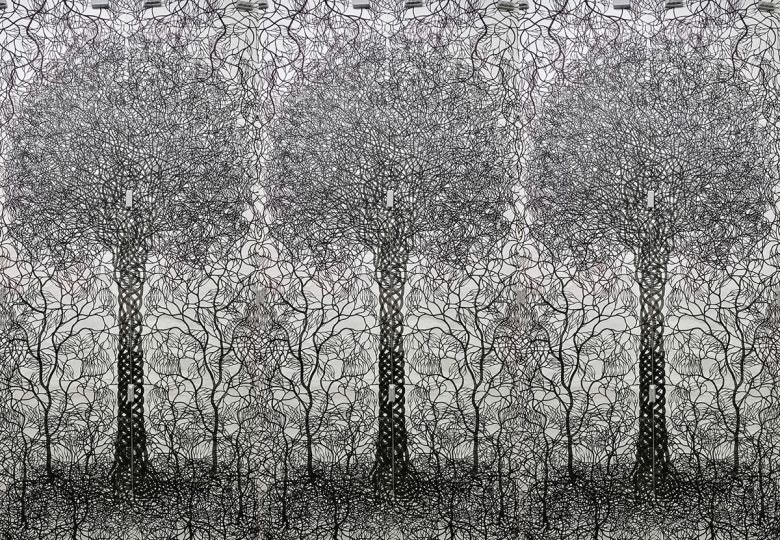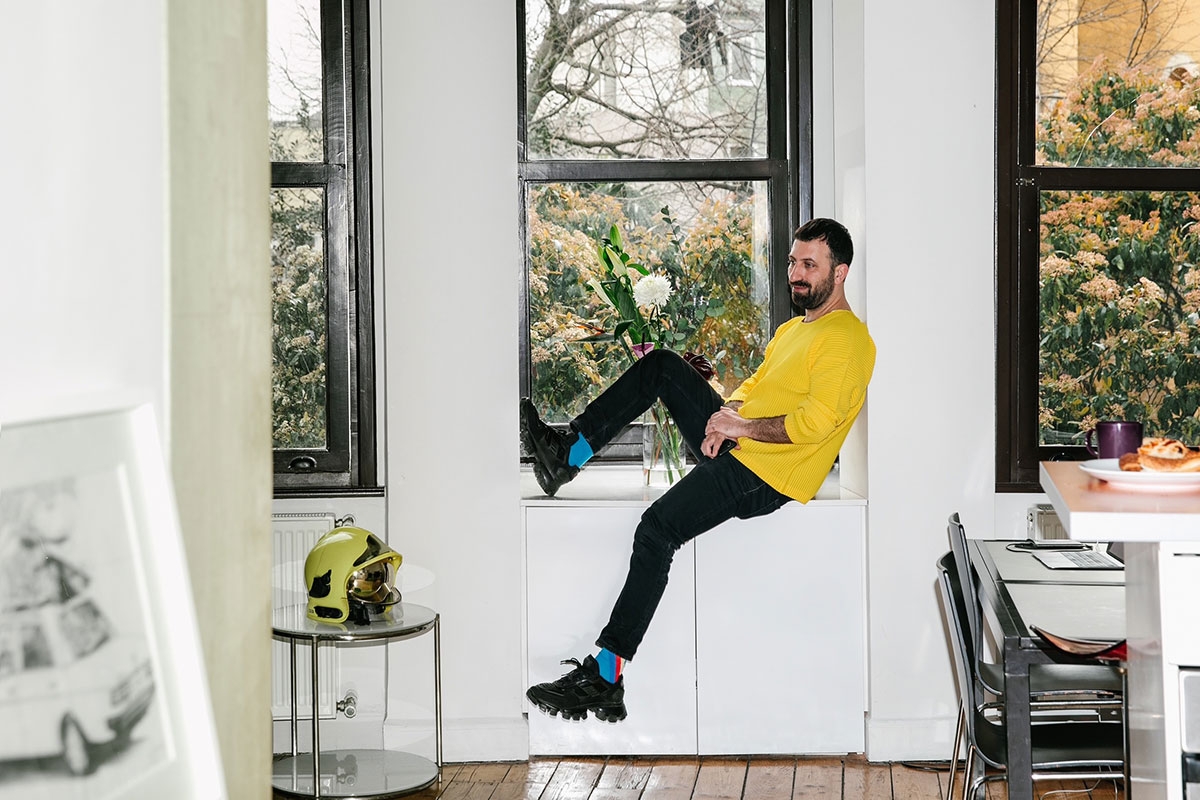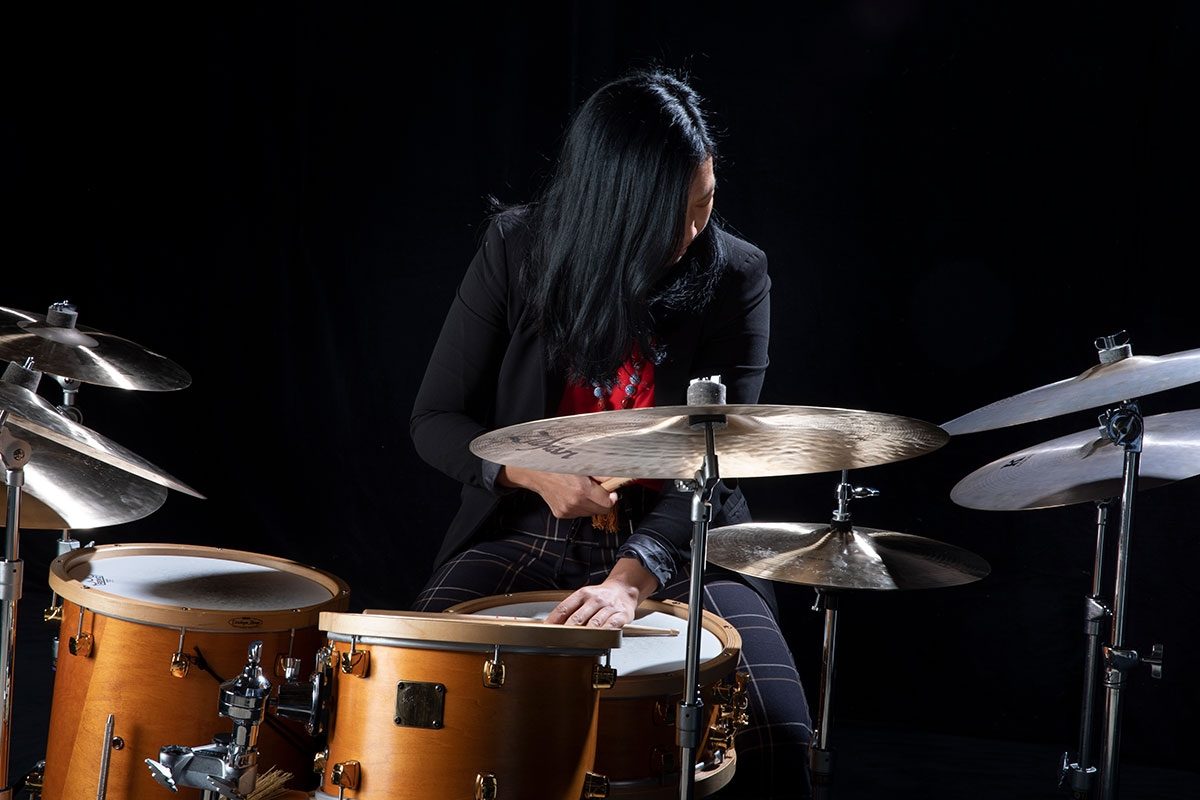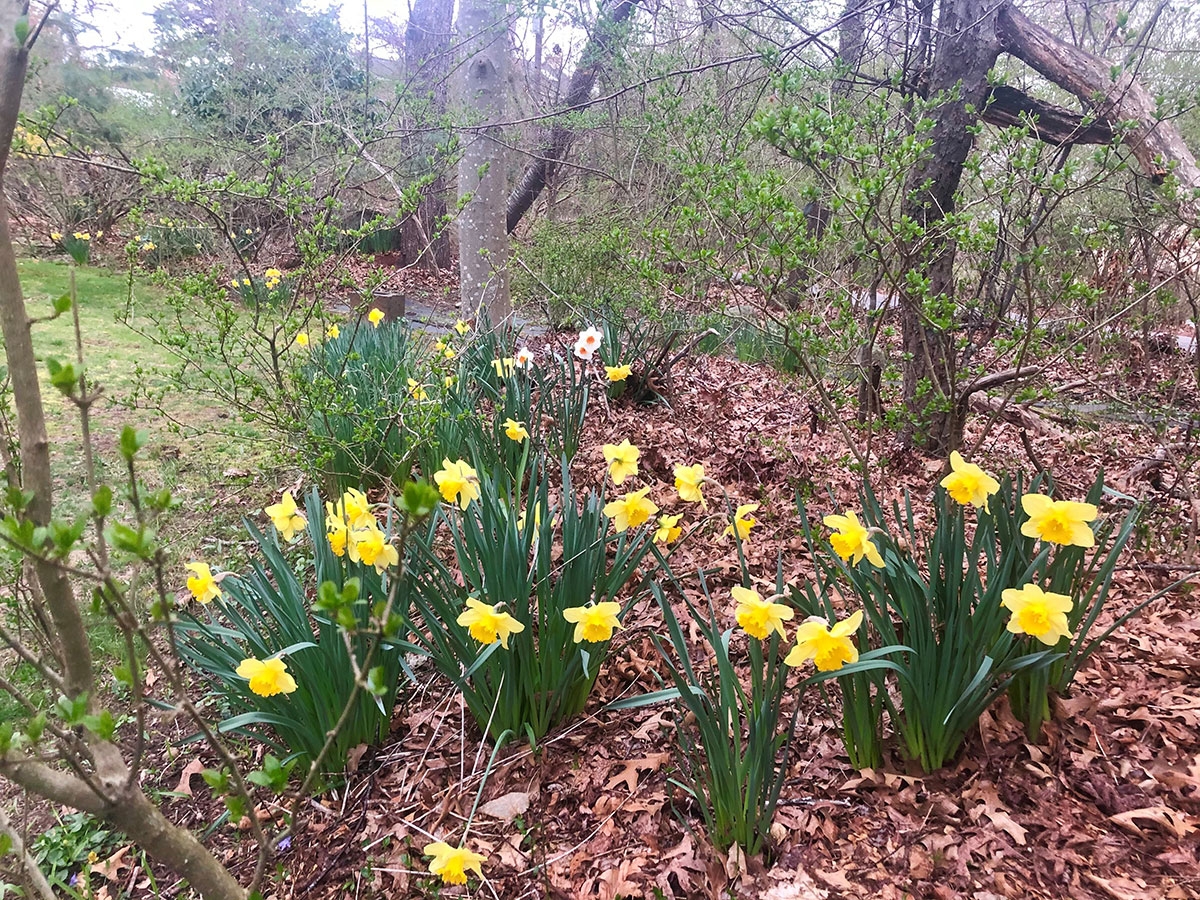-web.jpg)
Photograph courtesy of the artist
-
Photograph courtesy of the artist
Dreaming With: Lao Tongli
Our Dreaming With Q&A series provides an exclusive glimpse into the artists’ lives and studios.
Where have you spent your time during the pandemic?
As usual, I spent most of my time in the studio, as I don’t have to go outside to the office or to work. I’m used to staring at my work every day, spacing out, and thinking about the next creation. During the breaks every day, I always browse news and current affairs on my mobile phone to get a sense of existence through my knowledge of what is going on in the outside world. No matter what kind of media and information I access, it always leads me to focus away from the painting process and return to reality to experience this chaotic moment in the world.
What books, music, movies, or podcasts have inspired you recently?
I have recently read two books on religious studies, The Essence of Religion by Ludwig Feuerbach (1845) and Buddhist Logic by Fyodor Shcherbatskoy (1930). From them, I learned about the purpose and origin of human religious activities. The understanding and inspiration that I have gained strengthened my grasp of and progress with a creative idea. It has been exciting to take prototype sketches from a year ago and gradually finalize them to the point that I can make them into a painting. They also convey the suggestions and needs from the deepest parts of my heart.
What are you working on right now?
I have always been committed to my own painting process and rarely get distracted by things outside my life. The creative process that I just mentioned is what I'm currently working on. Facing the current epidemic, I inevitably worry about the future. This kind of anxiety and restlessness has more or less influenced my mood. It also reminds me of the times when my parents were faced with difficulties and disappointments in life, they always paid tribute to the gods of their faiths in front of [the portrait or statue of] the family god and the Buddha. Their deeds of worship and praying to the Buddha in the form of burning the incense have deeply influenced me. Through the ritual of offering the incense to honor the Buddha, I found an entry point of expression in my painting practice, which is consistent with my spiritual prayers and wishes. In front of the heavenly spirits and the Buddha, I burnt “three sticks of incense” in my most pious way—depicted as the three intertwining "trees of life" that spiral upwards and connect earth to heaven. They sacredly stand side-by-side, as my kind of way of sacrifice to face the present, to dispel my anxiety and restlessness by praying as such, in order to seek an ideal Buddhist state of mind with precepts, concentration, and wisdom. I think this is also a form of worship from my personal religious beliefs and a "day of prayer" —I have always meditated.

Photograph courtesy of the artist
What artist or work of art has most recently had an impact on you?
Not [in] particular, recently. They might still be on the way. When I was young, I was easily moved and influenced. As I gain [an] increasingly deeper understanding of art, fewer things [can] touch my heart. Maybe it is because I am trapped in a kind of role like those who are closely involved fail to see so clearly as onlookers, and this closeness interferes with the influx of new things.
What are you most looking forward to in 2021?
I look forward to not wearing a mask and breathe freely in public spaces. When we recognize the familiar faces heading towards each other, we don’t have to talk about interesting things while keeping a distance. Of course, things that are ongoing—making paintings, that I believe is still the most comfortable way to obtain freedom and happiness. That is the most important thing in life; isn't it what we have already been doing all this time?

Photograph courtesy of the artist
What do you want viewers to take away from experiencing your work in the Triennial?To perceive a sort of endless life cycle, to touch, exchange, and connect with the emotion and consciousness of the cyclical life. I hope that everyone will understand, cherish, and love life and return to the exchange and communication between man and nature, between man and all sentient beings. To not forget that it is the most fundamental and primordial way for humankind to understand and care for the world. Meanwhile, each of us should feel in awe of the world, nature, and life, knowing that every “individual” life is a part of an extension of life in nature. In contrast, all life is fragile; in the end, everyone will become prey to others. Therefore, seeking a harmonious coexistence with you in me and me in you, and cherishing the way of survival leading to a reproducing life cycle together, should inform the natural and deep awareness of ecological balance, as the human society is faced with the gradual imbalance of the world.
Are there any fun facts about your practice or your work in the Triennial that you would like to share with readers?
For me, [artmaking] is the universe and epitome in the midst of persevering through willpower. It is the most unwise of creative approaches to complete extremely time-consuming works when one is in a financially unstable stage, and it is also one of the most arduous and thankless means of making a living. I often wonder whether it is worthwhile to put in the effort regardless of cost, and it only leads to the question of whether I should live for my art. Actually, I am more afraid of working for others for survival. Therefore, my worst-case scenarios become unimportant. When I paint, it’s like listening to Keith Jarrett's piano pieces, and all the external pressure is ineffective to me. Because there is no time to get distracted when you become engrossed as you listen, and you forget everything around you.



